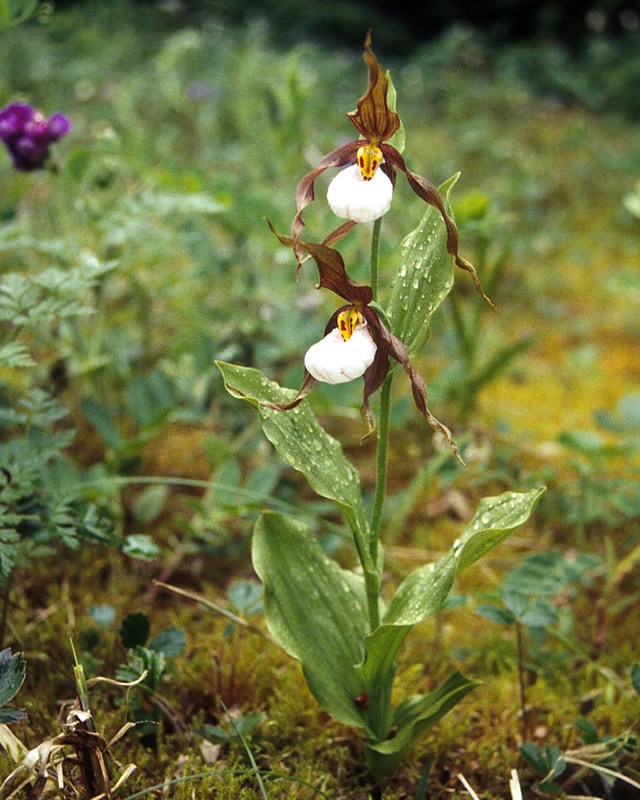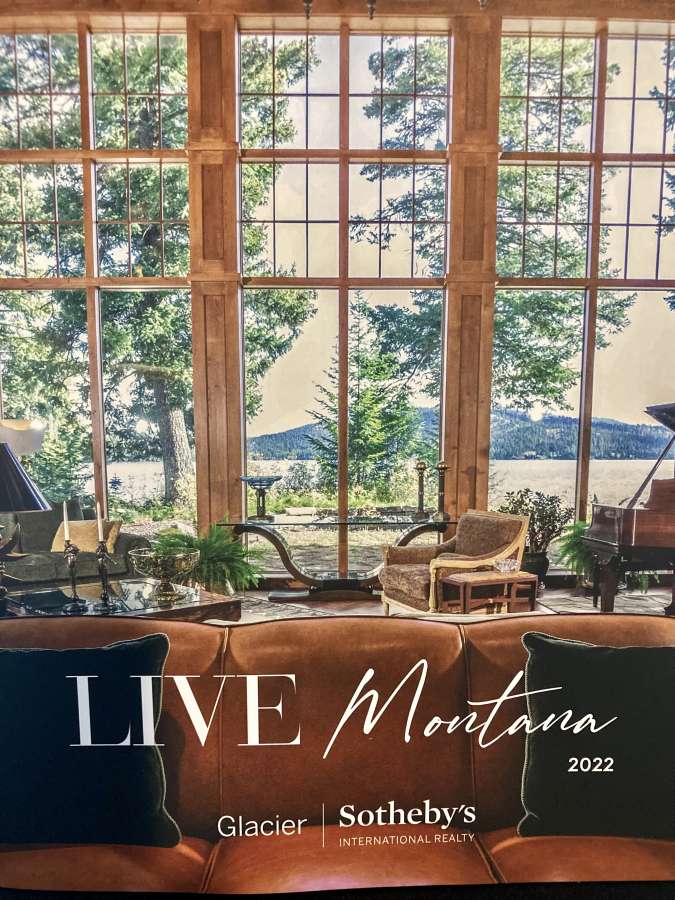May and spring are here, which means wildflowers will be covering the mountain foothills and meadows very soon. Can’t you just hear Julie Andrews belting out The Sound of Music as you visualize Montana’s wild floral bounty? But did you know, despite our short growing season, that Western and Northwestern Montana are home to several types of orchids?

Image via Field Guide Montana
Alaskan Rein Orchid
If you’ve gone for a hike in Western or Northwestern Montana, you may have walked right past one of these (approximately) 28” stalks and not noticed the small orchids sprouting from the main stem. With its widely spaced translucent greenish-yellowish flowers, Alaskan Rein Orchid is often found in shady, woodland, forest, and scrub/dry habitats. Rein orchids have a symbiotic relationship with decaying plant debris, fungus, and tree roots. They are also nocturnal flowers, meaning they only release their musky, soapy aroma at night. Because of this, they are primarily pollinated by moths.
Thinking of listing your home this spring? Here is what you need to know right now. >>>

Image via United States Department of Agriculture
Mountain Lady’s Slipper
I remember the first time I spotted one of these as a teenager. I was strolling along Forest Service, where I lived in the Gash Creek area west of Victor. I saw just one, it was only about six inches tall, and I was utterly mesmerized. You see, until the age of nine, I lived in New Hampshire, where Lady Slippers grew tall, and the slipper was the size of the palm of your hand. I was fascinated by this much smaller, more delicate, but equally magical orchid. The Lewis and Clark expedition first documented the Mountain Lady’s Slipper in Idaho in 1806. These orchids are rare or becoming rare and can be found under trees, in grassy meadows, or on prairies. If you see one, do not pick it! They do not transplant successfully.

Image via Field Guide Montana, @James Riser
Clustered Lady’s Slipper
What’s the only thing better than finding a Lady Slipper in the mountains of Montana? Why, finding a cluster of them!
These small, clustering orchids have an intriguing beginning. The mature seeds of this plant are underdeveloped, and lack roots, leaves, and chlorophyll. In fact, the seed has to be “invaded” by fungi found in the soil. The plant matures when the seedling enlarges, post-fungal-invasion, and a bulb-like structure is formed. It’s believed this process takes up to three years! It’s not a wonder this mountain orchid is uncommon, and is protected by the U.S. Forest Service.
Indulge your spring fever with these gorgeous outdoor spaces >>>

Image via Gardenia.net
Giant Helleborine
This Montana native orchid must have a permanent and constant water source at the roots, so it is found on riverbanks, around hot springs, and in high-elevation meadows. They have also been observed in “fens” or “old growth” wetlands with minimal physical disturbance. Purely ornamental, Giant Helleborine – nicknamed “Stream Orchid” – is not used for medicinal purposes but has been used by Native Americans for ceremonial reasons. The Giant Helleborine is considered uncommon, but not rare, and is classified as a “species of concern” for its declining populations in some regions. If you see this beauty on your hikes this summer, stand at a distance (soil disruption at the root is bad for orchids), snap a picture, and leave it for the next back-country explorer to find.


Image via United States Department of Agriculture
Giant Rattlesnake Plantain
This type of orchid, known for its bold white stripe down the center of the base leaves, has only four species in North America. In Montana, it is located in high-elevation spruce-fir forests. Despite its somewhat menacing name that suggests poison and potential death, cousins of this orchid have been used as medicinal and therapeutic treatments for everything from stomach disorders and jaundice to tuberculosis and cholera. This particular species’ leaves have been used to make a poultice to relieve cuts and wounds and to treat sore muscles.
 Kat Hobza has lived in Montana since she was nine and was raised in the mountains west of Victor, Montana. There, she learned to hunt, fish, shoot competitively, chop and stack firewood, and drive on icy and muddy roads. Kat has over two decades of experience in professional writing, content, and digital marketing and is a marketing consultant for Glacier Sotheby’s International Realty. When she’s not working, she’s either hanging with her hilarious adult kids or soaking up the sun somewhere – a riverbank, a golf course, or her deck. You can contact Kat through her business website, Way Easy Marketing.
Kat Hobza has lived in Montana since she was nine and was raised in the mountains west of Victor, Montana. There, she learned to hunt, fish, shoot competitively, chop and stack firewood, and drive on icy and muddy roads. Kat has over two decades of experience in professional writing, content, and digital marketing and is a marketing consultant for Glacier Sotheby’s International Realty. When she’s not working, she’s either hanging with her hilarious adult kids or soaking up the sun somewhere – a riverbank, a golf course, or her deck. You can contact Kat through her business website, Way Easy Marketing.
Enjoy our lifestyle and real estate magazine, LIVE Montana…



